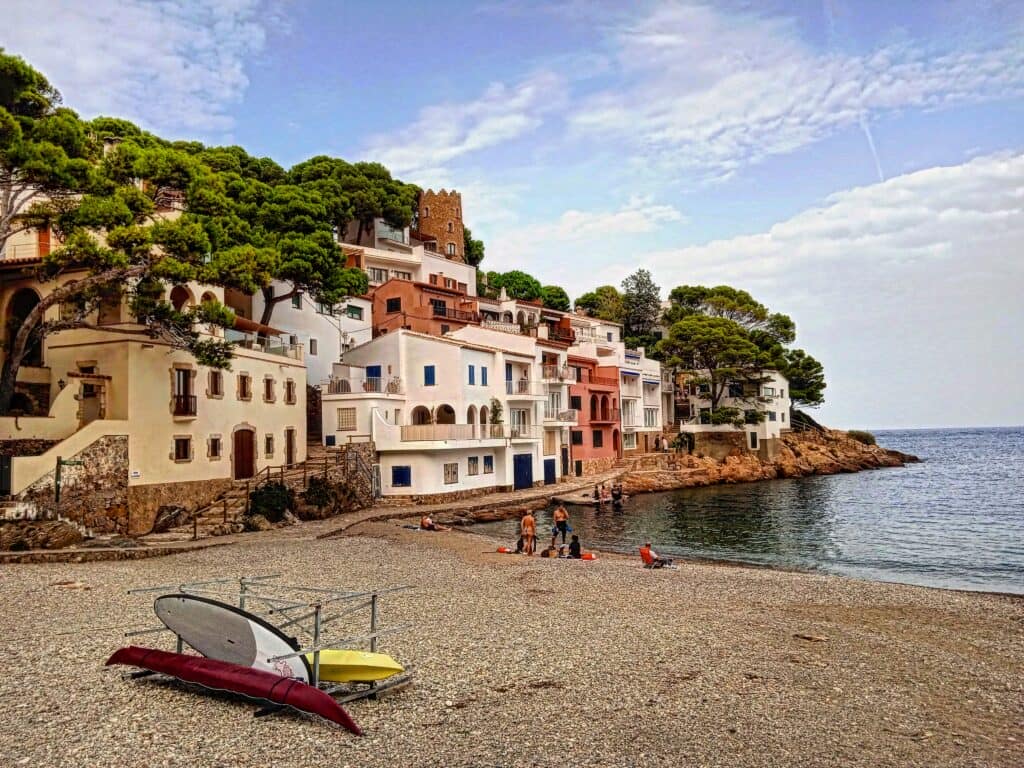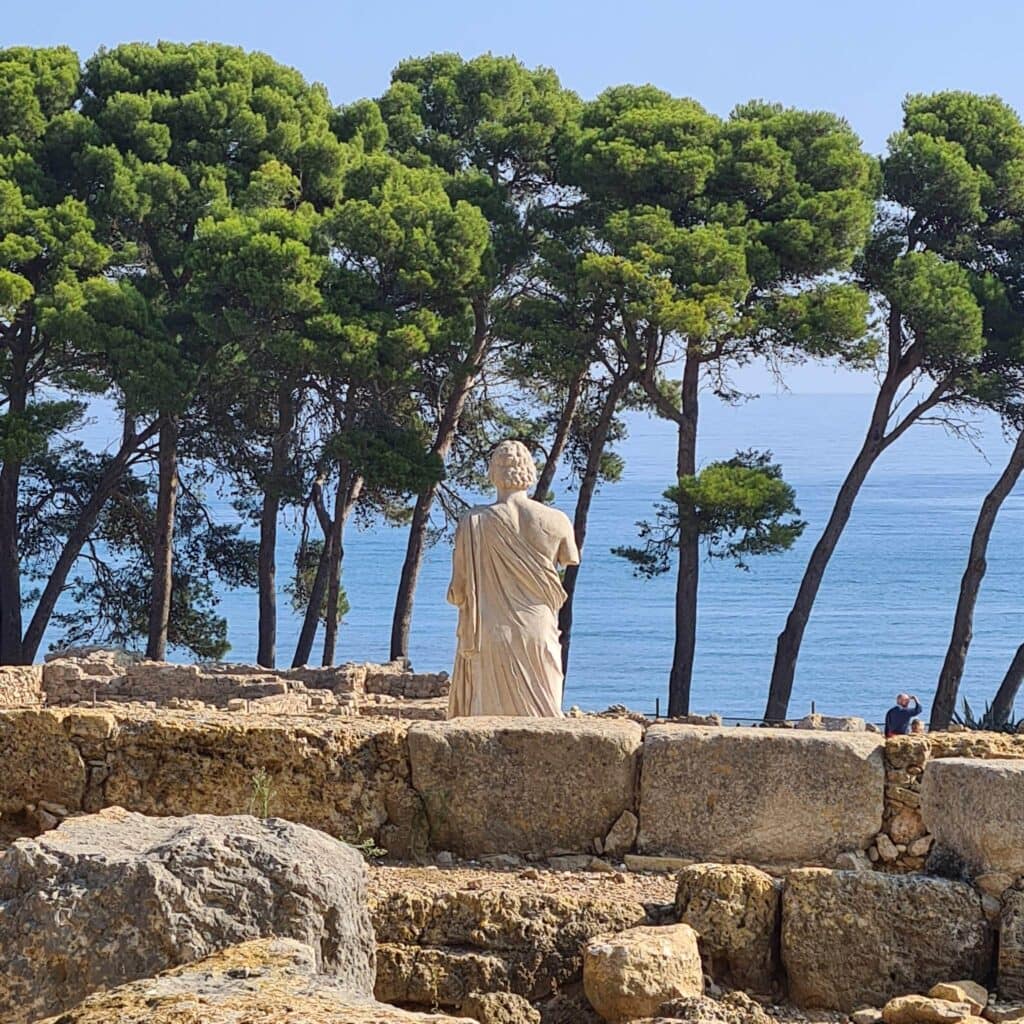The route from Sant Martí d’Empúries to Sa Tuna will take us along the breathtaking Costa Brava coastline, offering a mix of historical charm and natural beauty.
Starting from Sant Martí d’Empúries, known for its ancient Greek and Roman ruins, you’ll stroll along scenic coastal paths with stunning views of the Mediterranean Sea. The route passes through picturesque fishing villages and secluded coves, such as L’Escala and Cala Montgó, where you can enjoy pristine beaches and crystal-clear waters.
As you continue Sant Martí d’Empúries to Sa Tuna, nestled between cliffs and pine forests, you’ll encounter traditional whitewashed houses and a peaceful atmosphere perfect for relaxation. This journey not only showcases the rugged beauty of the Costa Brava but also provides opportunities to immerse yourself in its rich history and tranquil seaside ambiance.
Sa Tuna
Sa Tuna is a tiny picturesque fishing village nestled in a small cove along the Costa Brava. The sandy beach is surrounded by cliffs, charming waterfront buildings, and old fisherman huts today converted into vacation homes. The quiet Sa Tuna is also known for its seafood restaurants.

Platja de Pals and Radio Liberty
The 2.4kms of sand beach, treeless and far from any inhabited area in a country still closed to the outside world under Franco’s dictatorship, seemed like the perfect location to build Radio Liberty. In March 1959, the anti-communist shortwave radio station started broadcasting from the Pals long beach. Radio Liberty was funded by the CIA (until 1971) and transmitted uncensored news and information to audiences behind the Iron Curtain, a key element during the Cold War. The almost 200 local workers were happy to receive a good salary under conditions unknown in the area.
Many Eastern European and Russian leaders, including Vaclav Havel and Boris Yeltsin, have testified to the importance of Radio Liberty broadcasts in helping end the Cold War. Radio Liberty and her older sister, Radio Free Europe, were even nominated by the former Estonian President Lennart Meri for the Nobel Peace Prize in 1991. With the fall of the Berlin Wall in 1989, Radio Liberty started its slow decline, last broadcasting in May 2001. The six big antennas were dynamited in 2006, and the facilities have been abandoned (and vandalized) ever since. Only a few local nostalgic people are trying to keep Radio Liberty’s memory alive.
Ruins of Empúries (Archaeological site)
Empúries was the gateway for the Greeks and later the Romans to the Iberian Peninsula. Today, an archaeological site allows visitors to walk through the ancient streets of both the Greek city, Emporium (6th century BC), and of the nearby Roman city, Emporiae (2nd century BC). The site features well-preserved ruins, including ancient walls, streets, houses, and mosaics.
One of the most important findings is the over 2 meters-high sculpture of Asclepius, the Greek God of medicine, healing, rejuvenation, and physicians.
There is also a small museum in the old restored medieval convent which displays a selection of toys, jewellery, paintings, mosaics, and many other items found on the site.







